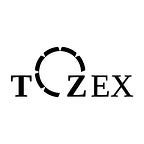Application of the diffusion of innovation theory to Blockchain technology
The adoption speed of a new technology is one of the most challenging economic questions. The diffusion of innovation (DOI) theory, developed by Everett More Rogers in 1962, is one of the oldest social science theories.
The DOI illustrates the maturity of a technology regarding its adoption by the society over the time. There are five phases of the technology innovation distinguished by the group of users: innovators, early adopters, early majority, late majority and laggards (Rogers, 1962).
The group of users could be described as:
. Innovators (2,5%): Small group of people exploring new ideas and technologies;
. Early adopters (13,5%): People who provide positive insights about new products and services, seeking improvements and efficiency. Provide guides on how to use the product/service;
. Early majority (34%): These are followers who will read reviews by earlier adopters about new products before purchasing;
. Late majority (34%): Group of skeptical people who are not aware on change and will only adopt a new product or service if there is a strong feeling of being left behind or missing out;
. Laggards (16%): People who are most resistant to adopt new products.
The adoption process over time of a technology could be illustrated as a “Bell curve”.
Where we could localize Blockchain technology on this curve?
The application of the DOI to the Blockchain technology reveals that we are in the end of the early adopter’s cycle which begins in 2013. We are entering in the “Early majority” phase.
Indeed, mature businesses in different sectors have entered the market and hundreds blockchain based solutions have been explored. According to the last report of the World Economic Forum, 80 percent of banks was involved blockchain technology project in 2017 and 90+ central banks are engaged in discussion about using the Blockchain technology. Moreover, the report highlights that 2,500+ patents filed over the last 3 years. Furthermore, a Gartner survey 66% of respondents (CEOs) believe blockchain technology “is a business disruption and have set budgets accordingly”.
Moreover, the market development analysis reveals that we are jumping in this new era. Indeed, investment into cryptocurrencies exploded, the global cryptocurrency market cap which breaks $600bn, nearly as much as the GDP of Argentina. Furthermore, Global venture capital investment in Blockchain solutions reached a new high of USD 1.1 billion.
The second factor influencing the adoption of a new technology is the improvement of its performance against the amount of effort and investment made. This is illustrated by the below S-curve which shows how the technology life-cycle will start and end due to learning curves.
The graph shows that just after the emergence of the technology, the performance is low while the effort invested in time and money is growing very slowly. Indeed, the adoption of a disruptive new technology like blockchain first needs to be fully understood. Only firms that embrace a full comprehension of the technology would want to adopt it.
This theory was already used for modelling adoption in United States of major previous technology appeared during the 20th century such as TV, computer or internet.
The mainstream adoption is a key factor to ensure the continuous innovation and the stability of the token-based economy.
The token-based economy has already begun and TOZEX is well positioned to offer a sustainable access to it.
See more at https://tozex.io
